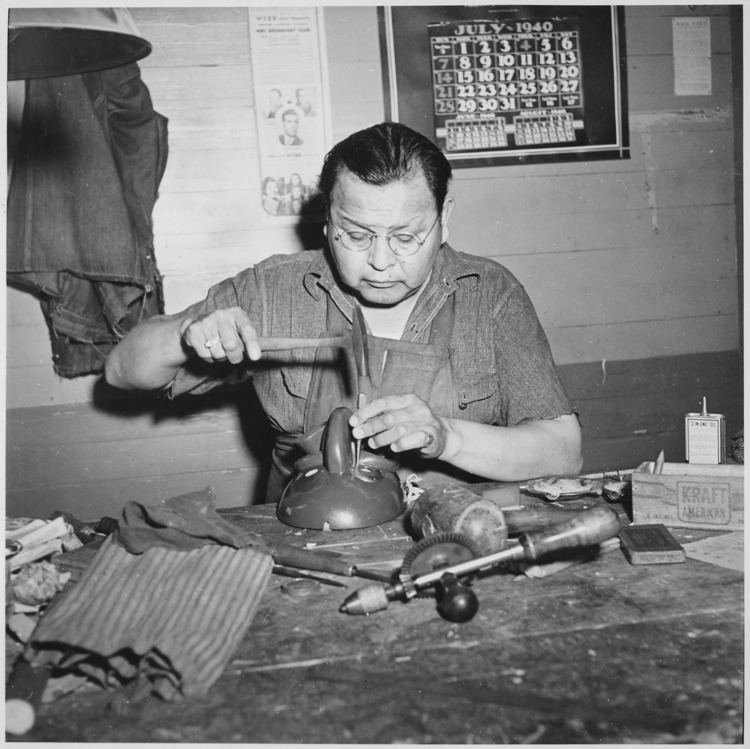Ethnicity Iroquois Role Author Movies Hiawatha | Books Legends of the Longhouse Name Jesse Cornplanter | |
 | ||
Born HayonhwonhishSeptember 16, 1889Cattaraugus Reservation, NY United States ( 1889-09-16 ) Occupation Author, artist, craftsman Subject Seneca life, culture, and religion Notable works Legends of the Longhouse, Iroquois Indian Games and Dances, collection SC12845 at the New York State Library, illustrated The Code of Handsome Lake Died March 18, 1957, Genesee, New York, United States | ||
Literary movement Iroquois Realism Citizenship American citizen 1924 | ||
Jesse J. Cornplanter (September 16, 1889 – 1957) (Seneca) was an artist and author. The last descendant of Cornplanter, an important 18th-century leader, his Seneca name was Hayonhwonhish. He illustrated several books about Seneca and Iroquois life. Jesse Cornplanter wrote and illustrated Legends of the Longhouse (1938), which records many Iroquois traditional stories.
Contents
Personal
Jesse Cornplanter was born in 1889 to Seneca parents Nancy Jack and Edward Cornplanter on the Cattaraugus Reservation in New York. He had two sisters, Carrie and Anna. He was the last male direct descendant of Cornplanter, a renowned Seneca war chief during and after the American Revolutionary War.
During World War I, Cornplanter enlisted in the U.S. Army in 1917 and served in Europe. He was wounded during the war and received the Purple Heart. While he was serving in the war, his father died. This was followed by the deaths of most of his remaining family in the 1918 flu pandemic, including his parents, a sister, and nieces and nephews. One sister and two orphaned children of his late sister survived. Cornplanter helped support and rear the children.
After the war, Cornplanter held many respected positions within his tribe. These included the ceremonial chief of the Long House and the chief of New Town, a traditional village. He sang for the Great Feather Dancer and was head singer for many ceremonies. He never married or fathered any known children.
Because Jesse Cornplanter left no heirs, his death in 1957 marked the official expiration of a treaty granting Cornplanter's heirs a perpetual Pennsylvania land grant of about 1500 acres along the Allegheny River. Following construction of Kinzua Dam by the US Army Corps of Engineers, completed in 1965, much of the former Cornplanter tract was flooded as a result of creation of a reservoir behind the dam for flood control and hydropower. This was in addition to 10,000 acres the COE took from the Seneca Nation of its lands along the river in New York.
Artwork
Arthur C. Parker (Seneca), Director of the Rochester Museum, commissioned Cornplanter as a youth to sketch scenes of contemporary Seneca life. This launched an eight-year collaboration between the two men. Forty-five of Cornplanter's drawings are in collection SC12845 at the New York State Library.
Though Cornplanter was only in his teens when the work began, he was already gaining recognition for his skillful portrayals of his tribe. He never received formal art training, but became successful as an artist. Frederick Starr commissioned Cornplanter to illustrate Iroquois Indian Games and Dances (c. 1903), a book depicting rituals, dances and games of Iroquois life. The young artist was credited as illustrator on the book's cover as "Jesse Cornplanter, Seneca Indian Boy". In addition, he illustrated The Code of Handsome Lake, a manuscript written by his father, Edward Cornplanter (Seneca name Sosondowah), and Arthur C. Parker. Cornplanter also wrote and illustrated his own book, Legends of the Longhouse, published in 1938.
His paintings are considered to be in the Iroquois Realist Style. This tradition dates to the 1820s work by brothers, David and Dennis Cusick (Tuscarora).
Although best known for his illustrations, Cornplanter was also a traditional wood carver. He greatly influenced successive generations of Haudenosaunee artists.
